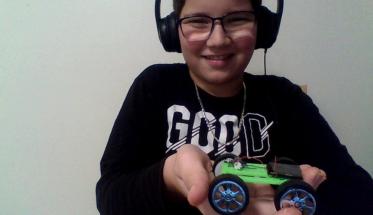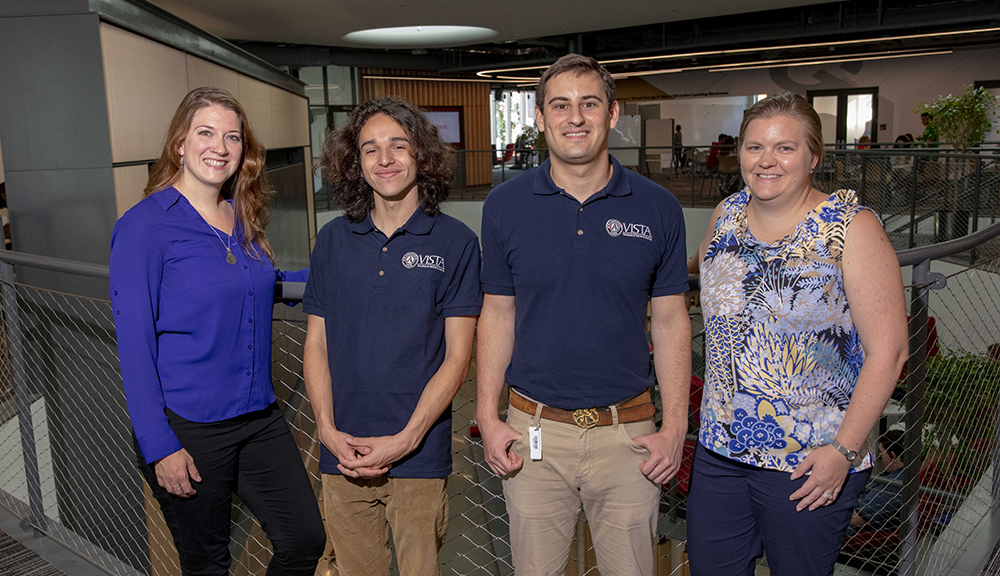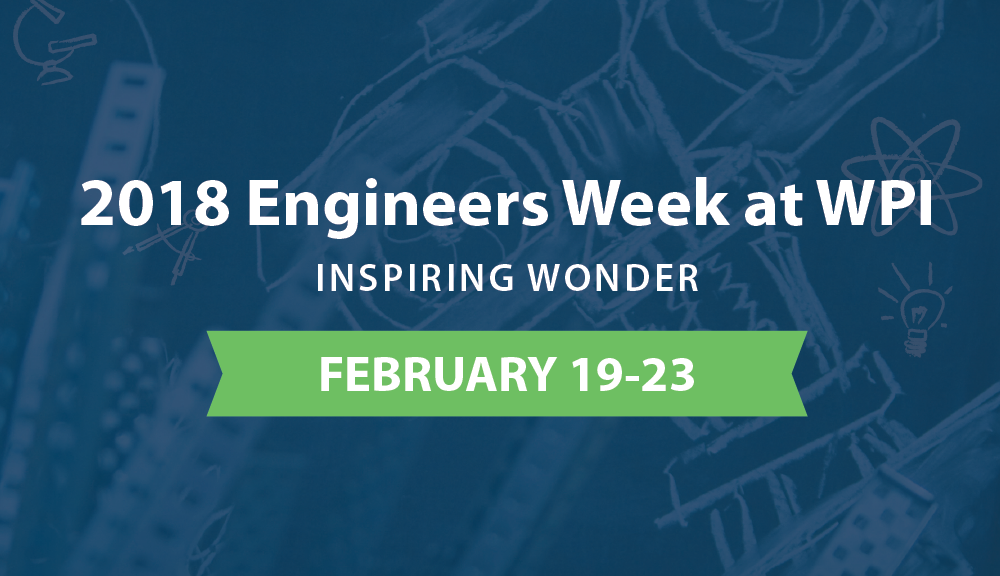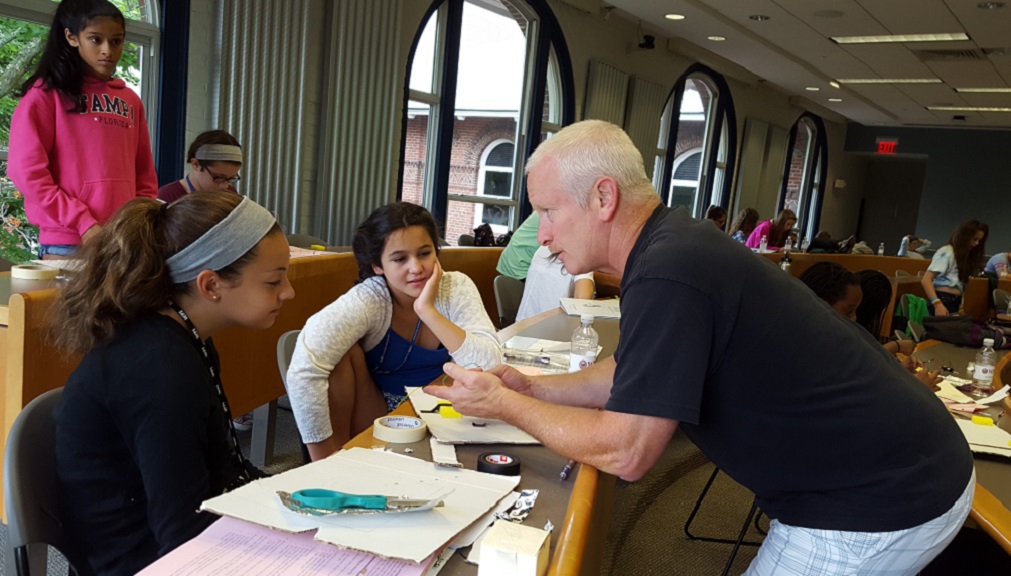While the COVID pandemic has curtailed some in-person activities and travel to campus, WPI’s Pre-collegiate Outreach has been creative in offering more programs virtually, reaching a wider audience internationally while also offering more opportunities for local youth.
Reaching up from our roots
Suzanne Sontgerath, director of the Office of Pre-Collegiate Outreach Programs, says that during this time organizers in her office and the university’s STEM Education Center have excelled at innovating virtual programming. Their process of engaging K-12 students in the STEM disciplines relies upon existing local and WPI resources, adds some creative components, and allows WPI student volunteers to work in new ways.
“The City of Worcester has been a good partner, making sure students have Chromebooks and Internet access,” says Sontgerath, adding “We are focused on building community and in finding creative ways to do so.”
Opening new worlds
Kathy Chen, executive director of WPI’s STEM Education Center, says virtual programming brings its own benefits, such as access. As a result, Frontiers for Credit, a Pre-collegiate Outreach program, will be offered again virtually.
“It allows us to reach a different audience,” Chen said. “There are those who are not able to come to campus due to transportation issues, or because they are international students.” As her office supports STEM educators, the virtual-heavy shift allows for professional development, networking and partnerships on a global scale, into a newly engaged community. “Our AmeriCorps VISTA (Jovietthe Ramos) has created new virtual STEAM programs that work with multiple Worcester Community-Based Organizations to provide opportunities for our local youth.”
Logistically, there are also plusses. Pre-Collegiate Outreach’s Associate Director Jenna Noel-Grinshteyn explains that space restrictions in planning middle school activities would mandate one event per day. With virtual, she can do three a day. The directors had to be adaptive and creative in facilitating virtual programs, and the usual timing of activities had to change.
For instance, Touch Tomorrow, usually a one-day campus festival, will be virtual this year and will last for one week, June 6-12. “In a virtual format, we can better promote it to classrooms and alleviate stress caused by time constraints for educators,” says Nicole Anterni, director of Sponsorship and Events, “while allowing guests more time to take advantage of all of the festival offerings.”
Foundations in place
Another strong base in building virtual programming here has been WPI initiatives such as Frontiers for Credit, a summer college-credit program for students entering grades 11 and 12. WPI made it virtual, finding new ways to make the content interesting, says Sontgerath, including offering virtual meeting spaces (Herd Hangouts) for students to get to know each other, as well as WPI undergraduates. Frontiers also offered lots of social programming such as movie nights, trivia nights, a Mindcraft server solely for Frontiers participants, and even a virtual Talent Show, as well as admissions presentations, resume workshops, yoga classes, and a Dinner with the Deans series.
Programs for younger kids, such as Girls Who Code, Introduce a Girl to Engineering, Middle School STEM, and Tech Kids, are run by Noel-Grinshteyn and Anterni. The Girls Who Code curriculum is computer based and it lends itself to online delivery. “Delivering some of our hands-on curriculum in a virtual environment was more challenging,” Sontgerath says. “We needed to make sure each activity had a set of instructions and a very specific supply list.”
In some cases, families needed to gather supplies themselves, and in other instances, the staff created kits of supplies that families could pick up. “We had to select activities that were fun and engaging but didn’t have the potential to destroy the family’s kitchen table,” she points out.
Another major change was giving the students a way to demonstrate their success, says Sontgerath. “Feeling like you accomplished something is very important to STEM self-efficacy,” she explains. “When we are in person, we have a reflection period and students can show their work. Online this is more difficult.
“We discovered some online tools such as Padlet, that allowed the participants to proudly share their work. Overall engagement was high and we had some students that participated in multiple programs over the course of the year.”
There were 542 kids served through this programming for grades 3-8 in 2020, says Noel-Grinshteyn, “This was free or at very reduced cost, using supplies they have at home or with supply kits that busy families could pick up here.” For example, electric toothbrushes were used to make robots in one of these programs recently.
Engineers on the Go, for grades 3-5, introduces details of engineering careers. Noel-Grinshteyn happily tells of a girl in a recent session who was getting so much satisfaction out of the online activities that she asked, “How do you decide on what kind of engineer you want to be?” Going beyond acquainting youth with this field to the stage where they seek guidance, narrowing down specialty categories is a sign the virtual initiatives are effective.
-Susan Shalhoub



